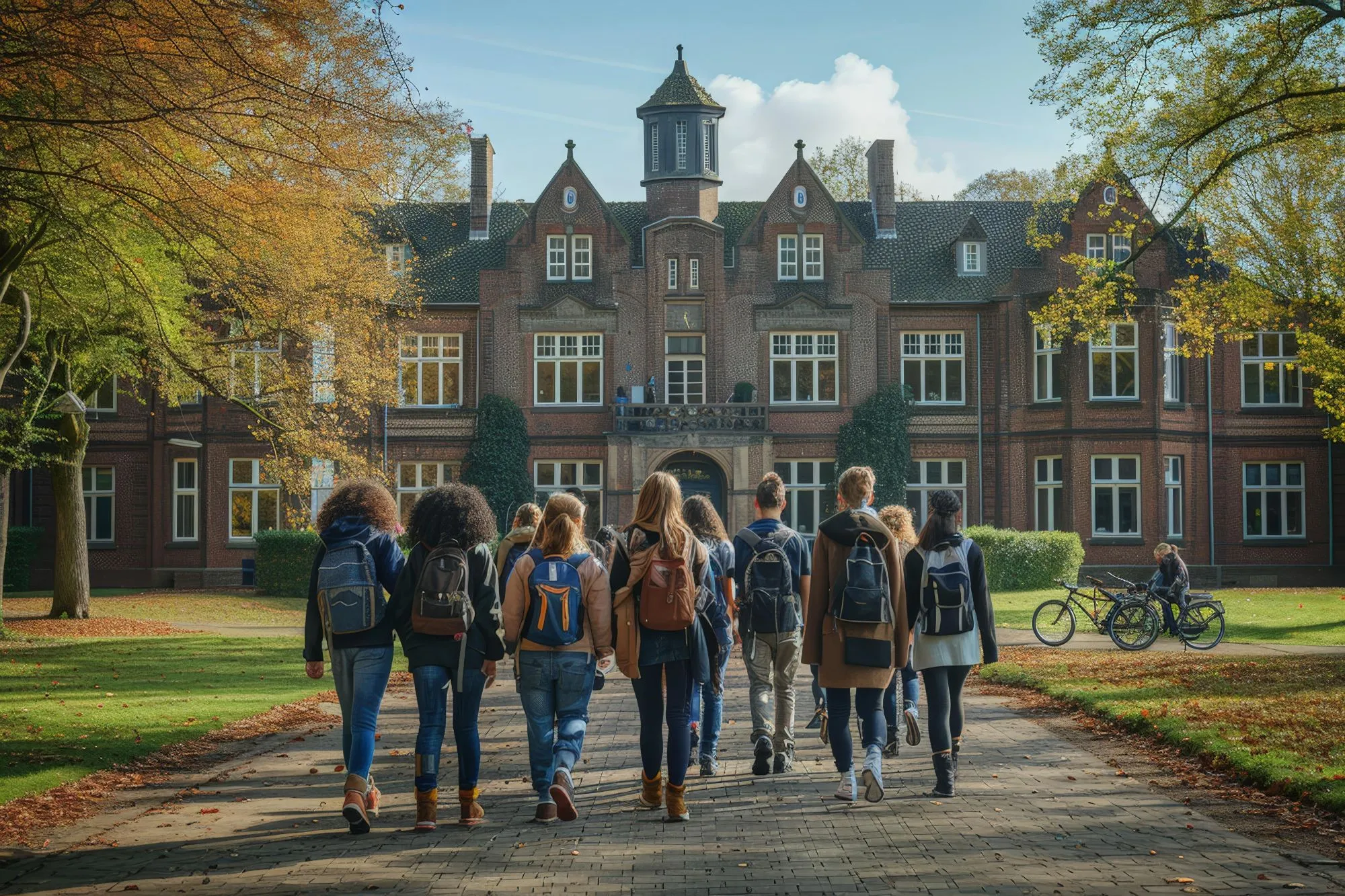Starting in November, applications will begin to open for some of the most prestigious summer programs in the U.S., including those offered by MIT, Yale, NYU, and others.
For students interested in science, math, engineering, or technology, these programs can serve as a valuable opportunity to deepen subject knowledge and gain hands-on experience. While not required for U.S. college applications, participation can strengthen your academic profile by demonstrating initiative and commitment.
Why Attend a Summer Program?
1. Experience College Life Early
Many programs are residential, giving students a taste of independence, dorm life, and collaboration with peers.
2. Networking Opportunities
These programs attract high-achieving students and renowned faculty globally. You’ll be exposed to new perspectives, big ideas, and innovative research in your field of interest.
3. Understand Your Academic Passion
Unlike high school coursework, summer programs focus on hands-on learning and deep exploration of specific subjects like neuroscience, artificial intelligence, or polymer chemistry.
4. Earn College Credit
Several programs offer college-level courses and credits, helping you get a head start on your undergraduate studies.
5. Unique Admissions Opportunities
Some programs, like the University of Chicago’s Early Decision Opportunity (ED0), offer students a direct admissions advantage if they’ve attended the university’s summer school. In some cases, recommendation letters submitted for the summer program will count toward your college application.
Things to Consider Before Applying
- Be discerning about program offerings
Some summer programs come with a high cost but provide limited academic value, resembling recreational camps more than learning experiences. Conduct thorough research to assess a program’s substance and credibility. - Prestigious affiliations do not ensure quality
Not all programs associated with elite universities are directly administered by those institutions. Verify the organizing body and instructional team to make sure the program meets your expectations. - Participation does not guarantee admissions advantages
While selective programs may enhance your academic profile, their impact on college admissions is not guaranteed. Focus on developing meaningful insights, producing strong work, and forming genuine academic or professional connections. - Consider how you allocate your time
Summer can also be an opportunity to pursue internships, independent projects, or personal development. Select activities that align with your long-term objectives and reflect your interests.
Top STEM Summer Programs for High School Students (2025)
Mathematics-Focused Programs
- HCSSiM – Hampshire College Summer Studies in Mathematics
- Duration: 6 weeks | Location: Massachusetts
- Emphasizes creative thinking and collaborative problem-solving.
- Application opens in January; due in March.
- PROMYS – Program in Mathematics for Young Scientists
- Duration: 6 weeks | Location: Boston University
- Involves rigorous mathematical exploration and research.
- Highly competitive; math problem set and recommendations required.
- Ross Mathematics Program
- Duration: 6 weeks | Locations: Ohio and Indiana
- Focuses on number theory and abstract mathematical reasoning.
- Acceptance rate around 30%.
- SUMaC – Stanford University Mathematics Camp
- Duration: 3 weeks | Location: Stanford University
- Covers advanced mathematical topics beyond the high school level.
- Extremely selective; application includes transcripts, essays, and an exam.
STEM & Science Research Programs
- NIH High School Summer Internship Program (HS-SIP)
- Duration: 8 weeks | Locations: Multiple NIH centers
- Students work directly with scientists on biomedical research.
- Must be a U.S. citizen or permanent resident, age 17+.
- HSHSP – Michigan State University
- Duration: 7 weeks | Location: MSU Campus
- Focuses on hands-on STEM research with faculty guidance.
- Competitive admission; essays and recommendations required.
- RSI – Research Science Institute
- Duration: 6 weeks | Location: MIT
- One of the most prestigious summer research programs globally.
- Acceptance rate <5%; application includes essays, test scores, and recommendations.
- Boston University RISE Program
- Duration: 6 weeks | Location: Boston University
- Offers internship and academic tracks in research science.
- Highly competitive; multiple essays and letters required.
- SIMR – Stanford Institutes of Medicine Research
- Duration: 8 weeks | Location: Stanford University
- For students interested in biomedical and clinical research.
- Preference for Bay Area residents.
- SSP – Summer Science Program
- Duration: 39 days | Location: Various U.S. campuses
- Students work in teams on real science research projects.
- Very competitive; standardized test scores are helpful.
- Beaver Works Summer Institute (MIT)
- Duration: 4 weeks | Location: MIT
- Project-based STEM curriculum with engineering challenges.
- Requires nomination and online course participation.
- Fred Hutch High School Internship
- Duration: 8 weeks | Location: Seattle, WA
- Paid research internship focused on biology and public health.
- No housing provided; competitive admissions.
- Garcia Research Program – Stony Brook University
- Duration: 7 weeks | Location: New York
- Students conduct original research in polymer science.
- Requires 3.8 GPA and strong recommendations.
- Hutton Junior Fisheries Program
- Duration: 8 weeks | Locations: National
- Paid internship in fisheries science, sponsored by the American Fisheries Society.
- Magee Women’s Research Institute
- Duration: 4 weeks | Location: Pittsburgh, PA
- Students present their own biomedical research.
- Open only to Pennsylvania residents.
- MISA – Medical Immersion Summer Academy
- Duration: 1 week | Location: Oakland, CA
- Students practice clinical skills and shadow physicians.
- Moderate application difficulty.
- MITES – Minority Introduction to Engineering & Science
- Duration: 6 weeks | Location: MIT
- Supports high-achieving students from underrepresented backgrounds.
- Highly competitive; fully funded.
- Mount Desert Island Biological Lab Program
- Duration: 10 weeks | Location: Maine
- Independent research under scientist mentorship.
- Requires biology, chemistry, and algebra background.
- SIP – Science Internship Program at UC Santa Cruz
- Duration: 10 weeks | Location: UCSC
- Students participate in ongoing research with university mentors.
- Simons Summer Research Program – Stony Brook University
- Duration: 6 weeks | Location: New York
- Involves individual research and presentations.
- Acceptance rate around 8%.
- SSEP – Smith College Summer Science & Engineering Program
- Duration: 4 weeks | Location: Smith College
- For female high school students interested in STEM.
- SASI – Stanford Anesthesia Summer Institute
- Duration: 2 weeks | Location: Stanford
- Combines lectures with clinical shadowing in anesthesiology.
- SAMS – Carnegie Mellon Summer Academy for Math & Science
- Duration: 4 weeks | Location: Carnegie Mellon University
- Targets underrepresented students; offers college credit.
- Welch Summer Scholar Program – Texas
- Duration: 5 weeks | Location: Various Texas campuses
- Offers in-depth STEM research for top Texas students.
Selecting the right summer program should align with your interests, academic readiness, and long-term goals. Many programs fill up quickly, particularly those with rolling admissions, so it’s important to plan ahead and apply early.
If you’d like support with choosing a program or preparing your application, contact us for personalized guidance.
 中文
中文 Tiếng Việt
Tiếng Việt




